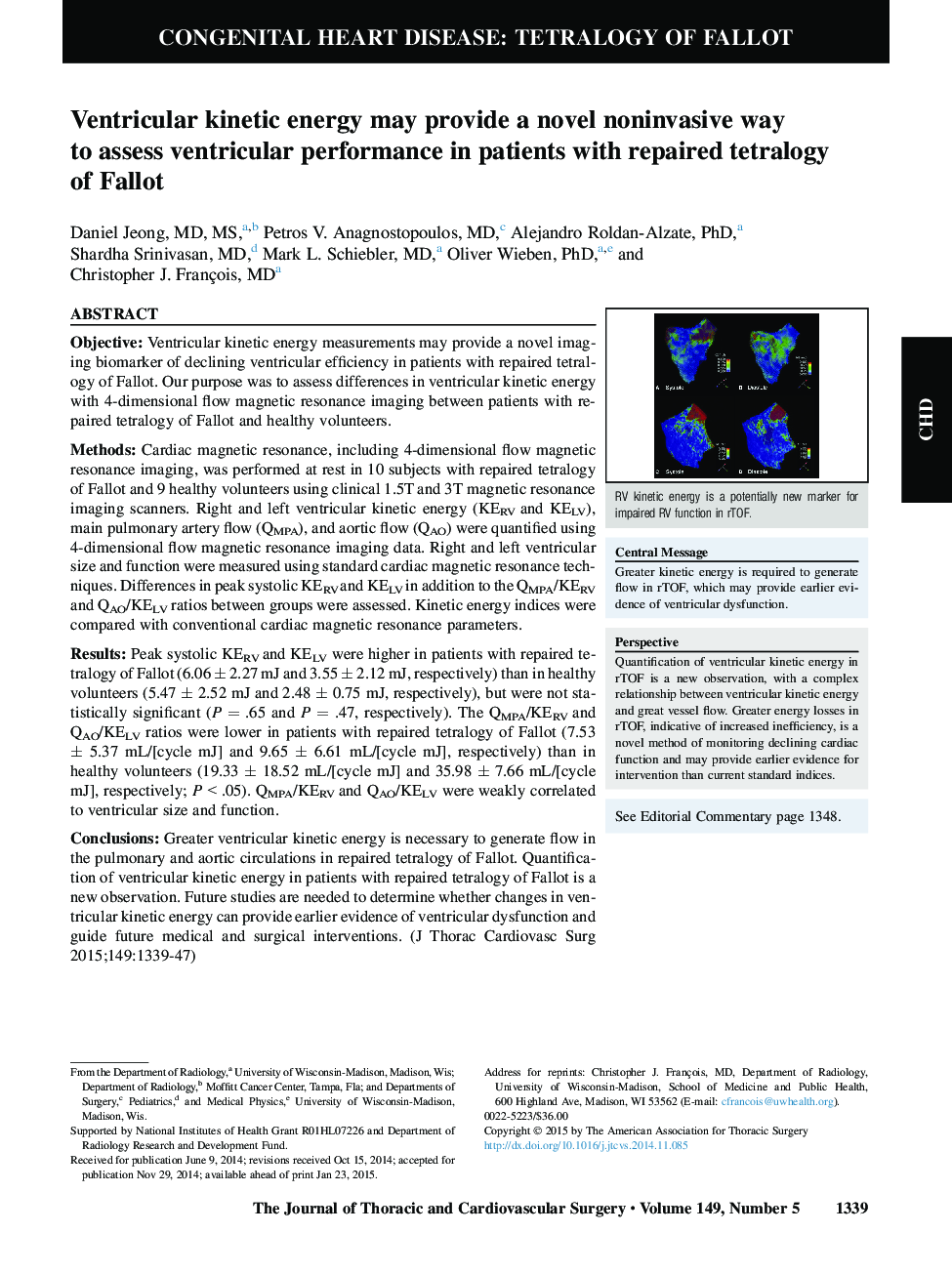| کد مقاله | کد نشریه | سال انتشار | مقاله انگلیسی | نسخه تمام متن |
|---|---|---|---|---|
| 2979570 | 1578598 | 2015 | 9 صفحه PDF | دانلود رایگان |
ObjectiveVentricular kinetic energy measurements may provide a novel imaging biomarker of declining ventricular efficiency in patients with repaired tetralogy of Fallot. Our purpose was to assess differences in ventricular kinetic energy with 4-dimensional flow magnetic resonance imaging between patients with repaired tetralogy of Fallot and healthy volunteers.MethodsCardiac magnetic resonance, including 4-dimensional flow magnetic resonance imaging, was performed at rest in 10 subjects with repaired tetralogy of Fallot and 9 healthy volunteers using clinical 1.5T and 3T magnetic resonance imaging scanners. Right and left ventricular kinetic energy (KERV and KELV), main pulmonary artery flow (QMPA), and aortic flow (QAO) were quantified using 4-dimensional flow magnetic resonance imaging data. Right and left ventricular size and function were measured using standard cardiac magnetic resonance techniques. Differences in peak systolic KERV and KELV in addition to the QMPA/KERV and QAO/KELV ratios between groups were assessed. Kinetic energy indices were compared with conventional cardiac magnetic resonance parameters.ResultsPeak systolic KERV and KELV were higher in patients with repaired tetralogy of Fallot (6.06 ± 2.27 mJ and 3.55 ± 2.12 mJ, respectively) than in healthy volunteers (5.47 ± 2.52 mJ and 2.48 ± 0.75 mJ, respectively), but were not statistically significant (P = .65 and P = .47, respectively). The QMPA/KERV and QAO/KELV ratios were lower in patients with repaired tetralogy of Fallot (7.53 ± 5.37 mL/[cycle mJ] and 9.65 ± 6.61 mL/[cycle mJ], respectively) than in healthy volunteers (19.33 ± 18.52 mL/[cycle mJ] and 35.98 ± 7.66 mL/[cycle mJ], respectively; P < .05). QMPA/KERV and QAO/KELV were weakly correlated to ventricular size and function.ConclusionsGreater ventricular kinetic energy is necessary to generate flow in the pulmonary and aortic circulations in repaired tetralogy of Fallot. Quantification of ventricular kinetic energy in patients with repaired tetralogy of Fallot is a new observation. Future studies are needed to determine whether changes in ventricular kinetic energy can provide earlier evidence of ventricular dysfunction and guide future medical and surgical interventions.
Journal: The Journal of Thoracic and Cardiovascular Surgery - Volume 149, Issue 5, May 2015, Pages 1339–1347
